Why you can trust Tom's Hardware
We saw excellent out-of-box results when testing the MPG321UR-QD’s grayscale and color gamut accuracy. Gamma was OK but with a bit of room for improvement. We’ll get into the details now.
Grayscale and Gamma Tracking
Our grayscale and gamma tests use Calman calibration software from Portrait Displays. We describe our grayscale and gamma tests in detail here.



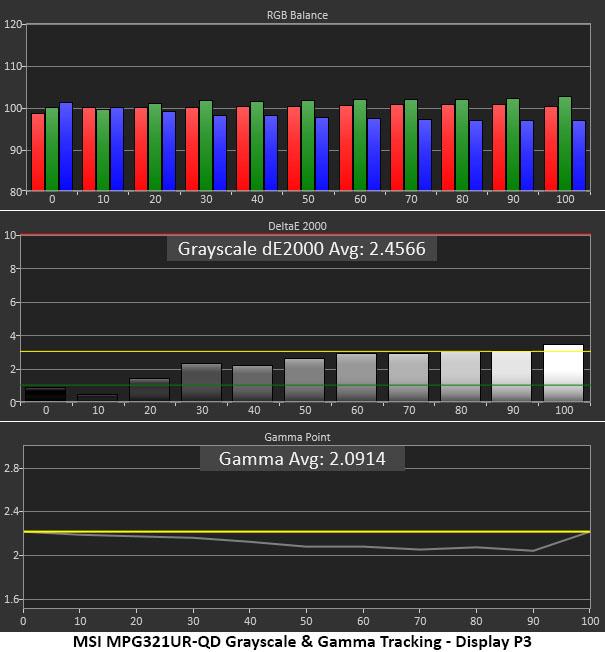
Starting with the default modes, the MPG321UR-QD shows excellent grayscale tracking with no visible errors. Though green levels fall a little as brightness rises, there is no value above 3dE. Gamma is a tad light from 40-90% which isn’t a major problem, but some additional presets would be welcome here.
The best way to control the MPG321UR-QD’s color is by changing options in the Pro Mode submenu. You can select the desired gamut by name. User represents the native DCI-P3+ color space (that grayscale result is the first chart). Moving along, the next three measurement runs are sRGB, Adobe RGB and Display P3 which is a little closer to the DCI-P3 spec than User. All have minimal grayscale errors and the same gamma tracking which favors bright highlights.
Comparisons
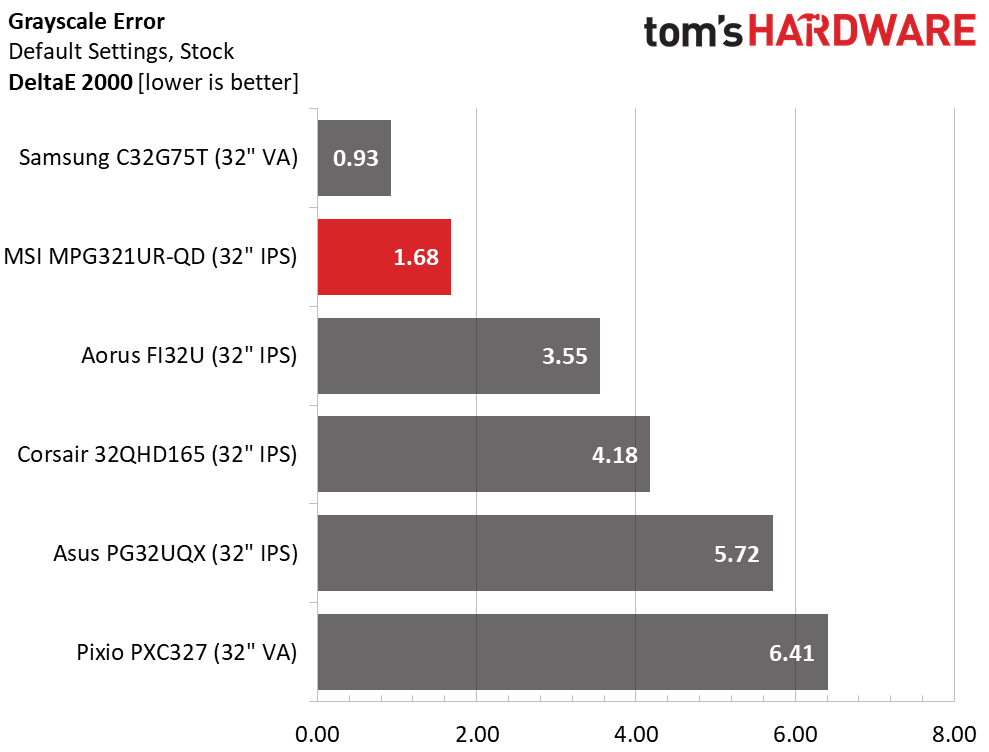


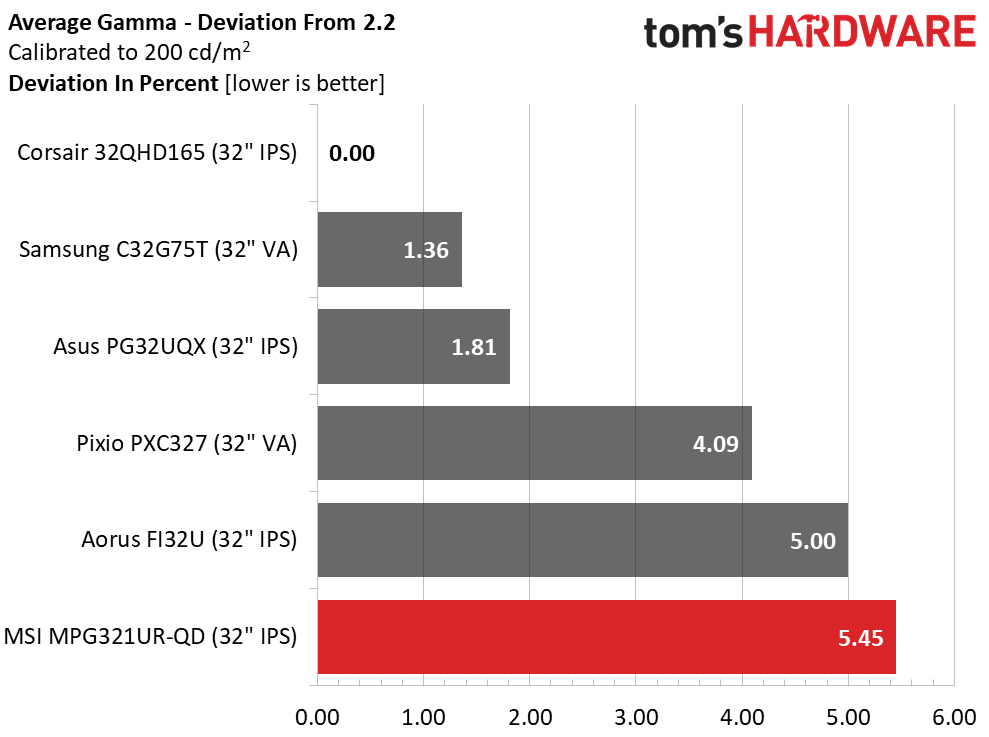
With no prior calibration performed on the MPG321UR-QD, we posted the same result for both charts, 1.68dE. This is a great out-of-box result and an average calibrated result. But since it’s an invisible error, there is no issue here. The MSI is a very color-accurate monitor.
The light gamma trace we recorded puts the MPG321UR-QD mid-pack in the range of values test and last in the deviation comparison. With an actual average of 2.08, it’s a little light in the mid-tone and bright areas of the screen. Its saturated color somewhat offsets this, but better gamma tracking could make the MSI look more vibrant.
Color Gamut Accuracy
Our color gamut and volume testing use Portrait Displays’ Calman software. For details on our color gamut testing and volume calculations, click here.
Get Tom's Hardware's best news and in-depth reviews, straight to your inbox.
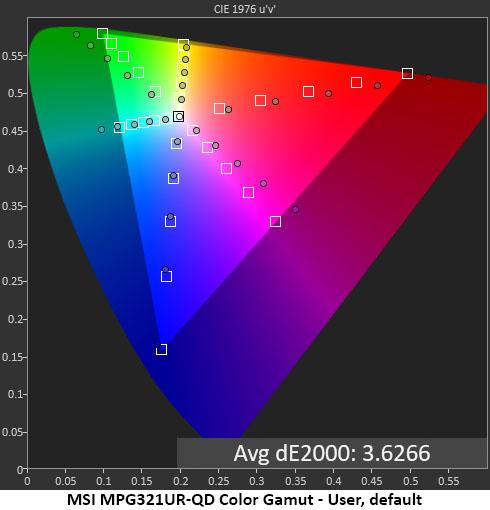


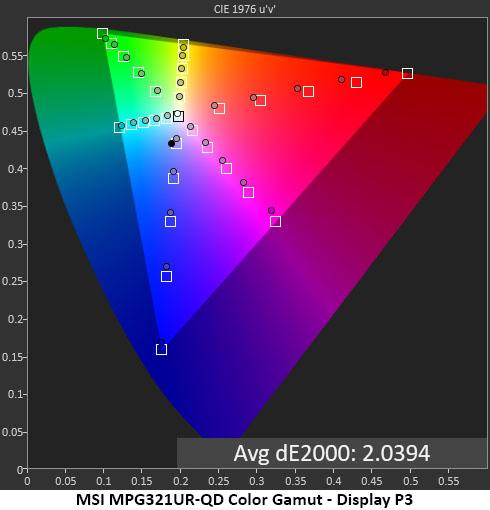
The MPG321UR-QD’s default color gamut is very large. You can see that it exceeds DCI-P3 in both red and green. What is interesting is the green hue error. It’s tracking towards a Rec.2020 green which is why it angles toward cyan. You won’t perceive this in content but if you want a better representation of DCI-P3, go for the Display P3 mode in the Pro Mode menu.
If you need sRGB or Adobe RGB, those modes are fairly accurate as well. Adobe has slightly under-saturated red and magenta but comes close enough to its targets to average just 2.30dE. sRGB exhibits similar behavior and averages 2.28dE. This is excellent performance for a multi-gamut monitor that doesn’t cost thousands of dollars. It’s the reason we dub the MPG321UR-QD a gaming screen with professional aspirations. It is entirely qualified for that task.
Comparisons
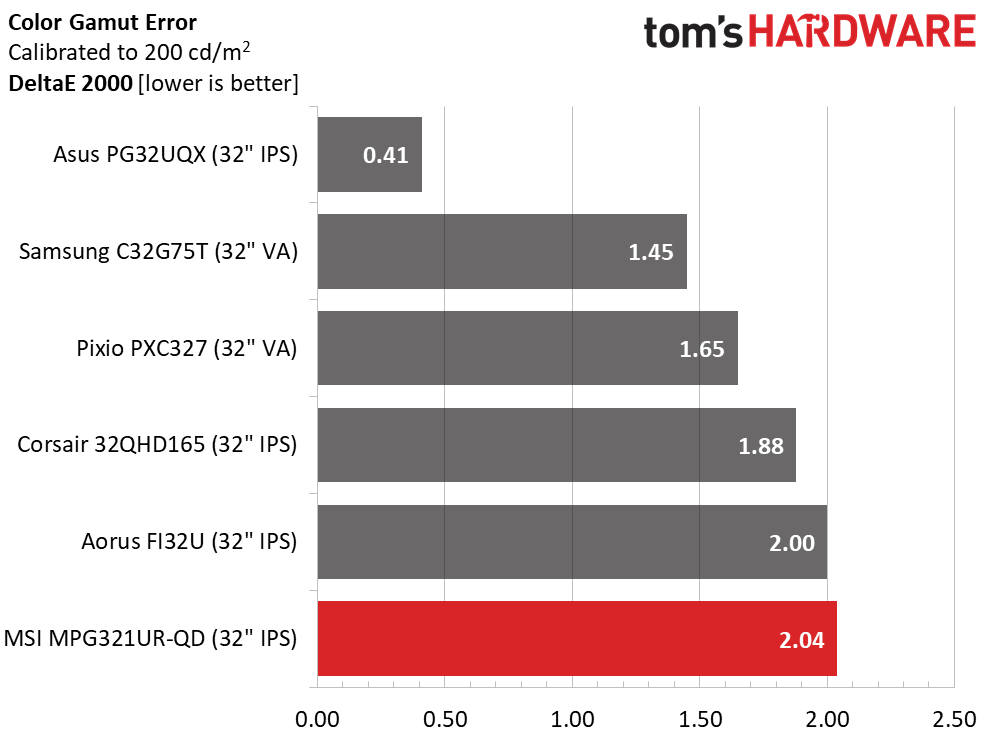
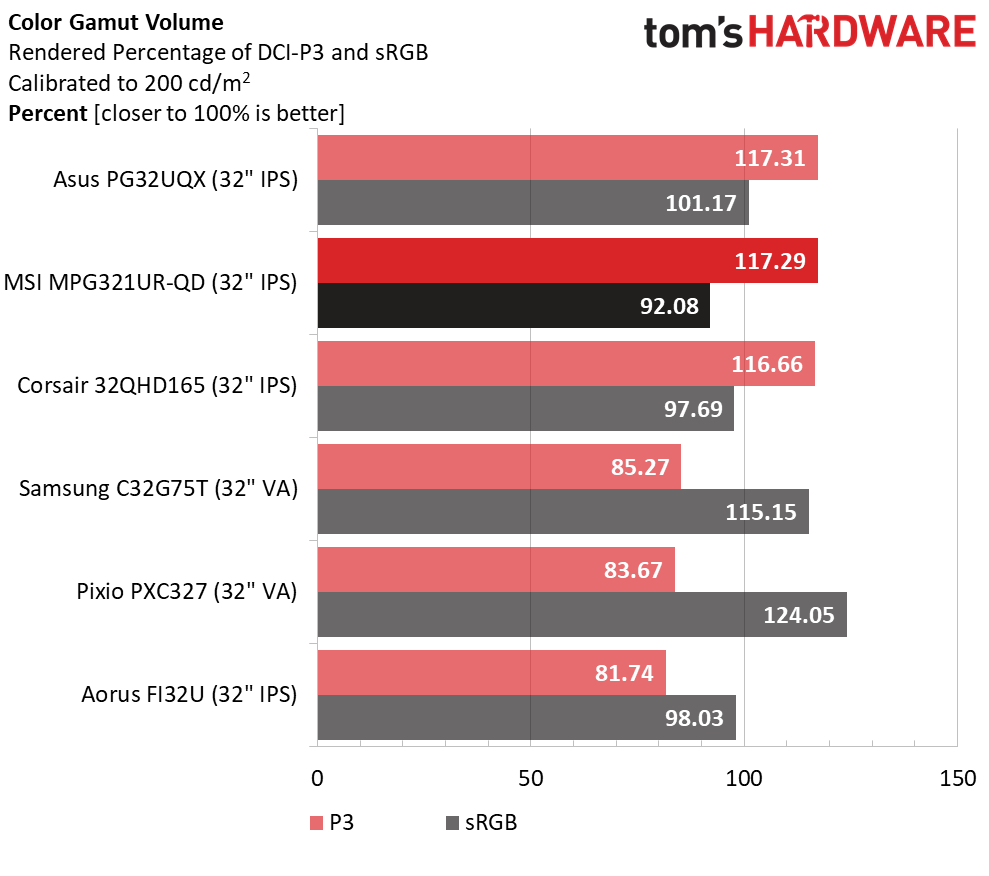
The MPG321UR-QD’s 2.04dE score puts it on par with all the other monitors except the PG32UQX which costs around $3,000. That represents the Display P3 mode. Other values are 2.28dE for sRGB, 3.63dE for User and 2.30dE for Adobe RGB. These are all excellent results for an uncalibrated screen.
The MPG321UR-QD’s color volume is prodigious at over 117% of DCI-P3, or 78% of Rec.2020 if you’re keeping score. The sRGB mode is a little under-saturated in red, resulting in 92% coverage. Adobe RGB covers 96% and Display P3 hits 91%. So, if you want the greatest possible color saturation, go for full native in the User mode. In any case, a software profile is recommended for critical work. You can rein in the native gamut to any desired standard that way.
Current page: Grayscale, Gamma and Color
Prev Page Brightness and Contrast Next Page HDR Performance
Christian Eberle is a Contributing Editor for Tom's Hardware US. He's a veteran reviewer of A/V equipment, specializing in monitors. Christian began his obsession with tech when he built his first PC in 1991, a 286 running DOS 3.0 at a blazing 12MHz. In 2006, he undertook training from the Imaging Science Foundation in video calibration and testing and thus started a passion for precise imaging that persists to this day. He is also a professional musician with a degree from the New England Conservatory as a classical bassoonist which he used to good effect as a performer with the West Point Army Band from 1987 to 2013. He enjoys watching movies and listening to high-end audio in his custom-built home theater and can be seen riding trails near his home on a race-ready ICE VTX recumbent trike. Christian enjoys the endless summer in Florida where he lives with his wife and Chihuahua and plays with orchestras around the state.
-
asianjabbachoy i have a M32U-SA 32in UHD . what are the differences between these two? to me it seems only difference is the HDR 600 and the RGB in the back of the monitor - can anybody see any other differnce? color accuracy is very similar but the MSI optix seems to have a bigger color gamut? is that noticeable? is it worth the $135 premium i paid for the M32U?Reply -
cknobman Lets see.Reply
Edge lit.
Poor contrast ratio.
Brightness not impressive.
Poor screen uniformity.
No way in hades I'd pay $900 for this. -
watzupken E-sports gamers won't be bothered with UHD monitors. What they want is high frame rates, couple with high refresh rate. I feel most will get a 1440p monitor for gaming if they want to step up from 1080p. The performance lost at UHD is too great, and especially so for fast pace games.Reply
And when I see edge LED lit, I am not hopeful of good HDR performance. You get very bright backlight @ 600 nits, but it generally lights up the entire screen. So till mini LED or OLED monitors become more mainstream, I think people buying LED lit monitor should not be looking at HDR as the main reason to buy a monitor. -
Endymio From the Article: "modern video cards can easily wring 200 fps or more from FHD and QHD screens. Does that matter? Oh yes, it does. Even casual gamers can easily see that difference. "Reply
I'd lay money that, in a properly-constructed double-blind test, 95% of gamers, casual, expert, or even professional eSports gamers, could not identify the difference between a 140hz and 200hz frame rate, or even between 140 and 360hz. -
Sopping_Wet Following the recent firmware updates. Inclusion of Premium Color mode in the OSD and now using the 8K HDMI 2.1 cable to my 12gb 3080 it is now the perfect monitor. That is all.. I am a critic but any saturation in windows with HDR on, flickers and oddities are gone. Colours are perfect.. my KDR is up with is less than 1ms latency and yep, I am one happy chap.Reply
Turn off your LEDs and enjoy the perfect black and colours in a dark room. boom -
Sopping_Wet Replycknobman said:Lets see.
Edge lit.
Poor contrast ratio.
Brightness not impressive.
Poor screen uniformity.
No way in hades I'd pay $900 for this.
In my actual experience, couldn't be further from the truth with my Optix MPG321UR QD -
Sopping_Wet The review of the MPG321UR-Quantom Dot 4k needs to be updated. Since the two latest firmware updates on this monitor our colorimeters show it to be almost half the input lag, the HDR is closer to 650-700, Premium color is perfect - when local dimming is off.Reply
It is currently the best monitor we have tested in store for gaming. While you need to use the DP 1.4a cable during the firmware updates, use the HDMI 2.1 Port (if you have a HDMI 2.1 card) and enjoy extra color performance, less lag and zero signs of any ghosting.